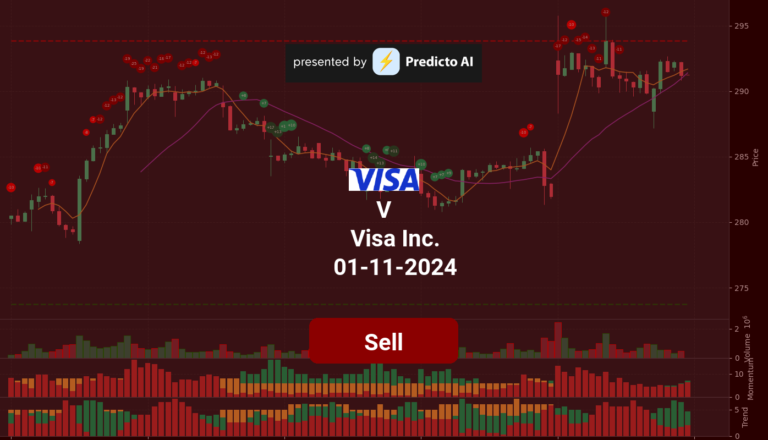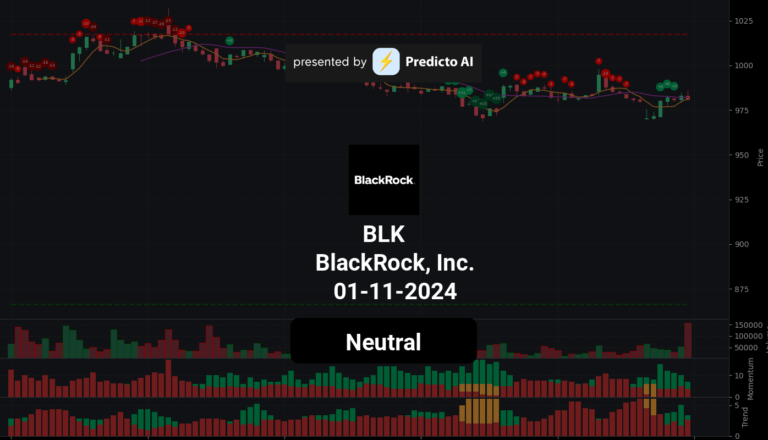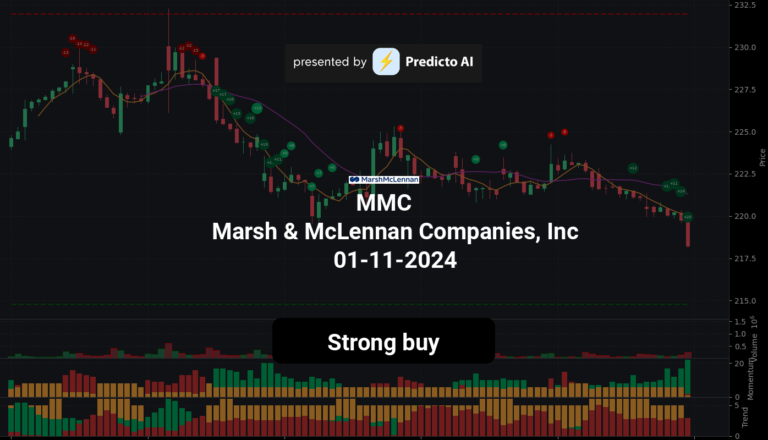NET Stock Analysis: A Mixed Outlook Ahead!
🔴 Recommendation: NET stock presents a complex financial picture, with both bullish and bearish indicators that suggest a cautious approach for investors.
📈 Key Highlights:
Technical Indicators: Currently trading above its 200-day EMA, signaling a strengthening bullish trend, while the MACD shows positive momentum.
Revenue Growth: Year-over-year revenue growth of 5.91% indicates moderate growth potential.
Institutional Ownership: High institutional ownership at 92.95% reflects strong confidence from large investors.
⚠️ Caution Flags:
Profitability Challenges: Negative net income of $-15.08 million raises concerns about the company’s ability to generate profits.
High Debt Levels: A concerning Debt-to-Equity Ratio of 2.45 suggests significant financial risk.
Overvaluation Risks: A high forward P/E ratio of 105.58 indicates potential overvaluation.
As we delve deeper into the analysis, we will explore the price trends, technical indicators, financial health, valuation metrics, and more to provide a comprehensive view of NET stock’s potential trajectory. Stay tuned for the detailed breakdown below! 👇
NET Price Analysis

| Positive Momentum Signals | Negative Momentum Signals | Hold Momentum Signals |
|---|---|---|
|
|
|
| Positive Trend Signals | Negative Trend Signals | Hold Trend Signals |
|---|---|---|
|
|
|
NET stock presents a complex financial picture, characterized by both positive and negative indicators. On the positive side, the stock is currently trading above its 200-day EMA, indicating a bullish trend that is strengthening. Additionally, the MACD has shown a positive histogram crossover, which often signals upward momentum. Momentum indicators also reveal a bullish divergence in the WaveTrend and an oversold condition, suggesting a potential reversal and bottoming out.
However, caution is warranted due to several negative indicators. The stock is currently below the 50-day EMA, which points to a bearish trend that is also strengthening. The StochRSI has indicated a bearish crossover, and the On-Balance Volume (OBV) is decreasing, suggesting that selling pressure may be increasing. Furthermore, the price is below the middle band of its Bollinger Bands, indicating a downtrend, although it is above the lower band, which may signal oversold conditions.
Given these mixed signals, investors should approach NET stock with caution. While there are signs of potential recovery, the prevailing bearish trends and decreasing volume raise concerns about the stock’s immediate future. A hold recommendation may be prudent, allowing investors to monitor for clearer signals of a sustained recovery before making further investment decisions.
NET Fundamental Analysis
NET’s recent financial performance presents a mixed picture, with several concerning indicators overshadowing some positive aspects.
The company’s net income for the most recent period was negative at $-15.08 million, highlighting ongoing challenges in achieving profitability. This is compounded by a high debt-to-equity ratio of 2.45, which raises significant concerns about the company’s financial risk profile and its ability to endure economic downturns. Additionally, a low current ratio of 0.69 suggests potential liquidity risks, indicating that the company may struggle to meet its short-term financial obligations. The cash to total assets ratio is also low at 0.06, reflecting limited financial flexibility and increased vulnerability to economic shocks.
From a valuation perspective, the metrics are troubling. The forward P/E ratio stands at a high 105.58, indicating potential overvaluation, while the price-to-sales ratio of 21.00 suggests that the stock may be overvalued relative to its revenue.
In terms of growth and profitability, the company reported a year-over-year revenue growth of 5.91%, which is a positive sign for potential stock price appreciation. However, the net profit margin remains negative at -3.76%, indicating difficulties in controlling costs and generating profits. Although the operating margin is efficient at 100.00%, the negative net profit margin raises concerns about overall profitability.
Regarding shareholder information, the average dilution of earnings per share was negative at $-15.08 million, suggesting that share-based compensation has significantly impacted earnings per share, potentially diluting value for existing shareholders. On a more positive note, the company engaged in stock repurchases amounting to $95.75 million, which can signal confidence in the company’s future and may enhance earnings per share.
The income statement reflects ongoing profitability challenges, with a negative net income despite a solid total revenue of $400.996 million. The low profit margins indicate persistent difficulties in cost management.
On the balance sheet, the average net debt is high at $1.14 billion, warranting further scrutiny regarding its impact on financial flexibility. The high debt-to-equity ratio and average total debt of $1.44 billion indicate significant leverage, which could pose risks in adverse economic conditions. However, the average tangible book value of $587.7 million provides some reassurance regarding the company’s net worth after liabilities.
In terms of cash flow, the average capital expenditures of $120.25 million suggest that the company is investing in growth and expansion. Additionally, positive net cash from financing of $615.95 million indicates that the company is raising capital, which could be utilized for growth initiatives or debt reduction. However, the free cash flow should be monitored closely given the high levels of debt.
Overall, while NET shows some positive indicators such as revenue growth and capital expenditures, the high levels of debt, negative net income, and potential overvaluation raise significant concerns about the company’s financial health and future performance. Investors should approach this stock with caution and consider the risks involved before making any investment decisions.
Financial Health
🔴 Net Income for the most recent period was negative at $-15.08 million, indicating challenges in profitability.
🔴 The Debt-to-Equity Ratio is high at 2.45, raising concerns about the company’s financial risk profile and its ability to withstand economic downturns.
🔴 Current Ratio is low at 0.69, suggesting potential liquidity risk, as the company might face challenges in meeting its short-term financial obligations.
🔴 Cash to Total Assets Ratio is low at 0.06, indicating limited financial flexibility and a higher vulnerability to economic shocks.
Valuation
🔴 Forward P/E ratio is high at 105.58, indicating potential future overvaluation.
🔴 Price-to-Sales Ratio is also high at 21.00, suggesting potential overvaluation relative to revenue.
Growth and Profitability
🟢 Year-over-year revenue growth was 5.91%, suggesting moderate growth, which could still be positive for the stock price.
🔴 Net Profit Margin is negative at -3.76%, indicating challenges in controlling costs and generating profits.
🔴 Operating Margin is at 100.00%, which is efficient, but the negative net profit margin raises concerns about overall profitability.
Shareholder Information
🔴 Average Dilution of earnings per share was negative at $-15.08 million, indicating that share-based compensation had a notable impact on earnings per share, potentially diluting the value for existing shareholders.
🟢 Stock Repurchases of $95.75 million can be a positive signal as it reduces the number of shares outstanding and may boost earnings per share (EPS).
Income Statement
🔴 Net Income is negative, reflecting ongoing challenges in profitability.
🟢 Total Revenue for the most recent period was $400.996 million, indicating a solid revenue base.
🔴 Low profit margins indicate potential challenges in controlling costs.
Balance Sheet
🔴 Average Net Debt is high at $1.14 billion, warranting further investigation into its impact on financial flexibility.
🔴 The high Debt-to-Equity Ratio of 2.45 raises concerns about financial risk.
🔴 Average Total Debt is also high at $1.44 billion, indicating significant leverage.
🟢 Average Tangible Book Value of $587.7 million represents the net worth of the company after deducting liabilities from assets.
Cashflow
🟢 Average Capital Expenditures of $120.25 million suggest the company is investing in growth and expansion.
🟢 Positive Net Cash from Financing of $615.95 million indicates the company is raising capital, which could be used for growth or debt reduction.
🔴 Free Cash Flow is not explicitly stated but should be monitored closely given the high levels of debt.
Overall, while there are some positive indicators such as revenue growth and capital expenditures, the high levels of debt, negative net income, and potential overvaluation raise concerns about the company’s financial health and future performance.
NET News Analysis
Cloudflare (NET) presents a mixed outlook for investors with both cautionary signals and positive growth indicators.
Summary of Cloudflare news indicates a blend of caution and optimism. The insider stock sales raise concerns about potential future performance, while the expansion of operations and positive momentum in the market suggest growth potential. Investors should weigh these factors carefully.
🔴 Cloudflare insiders sold US$3.9 million of stock, which may signal caution regarding the company’s future performance. This could indicate a lack of confidence from those closest to the company.
🟢 Despite the insider selling, Cloudflare is highlighted as a top momentum stock for the long-term, suggesting that it has strong growth potential and is attracting investor interest.
🟢 The opening of a new headquarters in Lisbon to support over 350 employees indicates Cloudflare’s commitment to expanding its operations in the EMEA region, which could enhance its market presence and customer service capabilities.
🟢 The expansion of EMEA operations is aimed at supporting growing customer demand and innovation, which is a positive sign for future revenue growth.
🟢 Institutional investors hold 78% ownership in Cloudflare, indicating strong confidence from large investors in the company’s long-term prospects.
NET Holders Analysis
The financial landscape for NET shows a mixed outlook, with both positive and negative indicators that suggest a cautious approach for the next month.
🟢 The company enjoys a **high institutional ownership** at **92.95%**, indicating strong interest from large investors. This level of institutional backing typically suggests confidence in the company’s future performance.
🟡 However, the **insider ownership is very low at 0.59%**, which may indicate a lack of confidence from management or a high degree of external control. This could lead to concerns about the alignment of interests between management and shareholders.
🟡 The **number of institutional holders is substantial at 962**, which reflects a diversified ownership structure. This can provide stability, but it also means that any significant selling by these institutions could lead to increased volatility.
🔴 Recent **insider transactions show a higher percentage of sales (approximately 76.4%) compared to purchases (approximately 23.6%)** over the last six months. This trend may raise red flags regarding the confidence of insiders in the company’s near-term prospects.
🟡 The **insider roster includes several key figures**, but the lack of significant insider buying could suggest that insiders are not optimistic about the stock’s short-term performance.
In summary, while the institutional backing is a positive sign, the low insider ownership and recent selling activity warrant a more cautious stance. Given these factors, a **neutral rating** is appropriate for NET stock over the next month, with potential fluctuations based on institutional trading behavior.
NET Analyst Ratings
The analyst ratings for NET show a mixed sentiment, with a notable number of hold and buy recommendations. In the last month, there were 5 strong buy ratings, 9 buy ratings, 16 hold ratings, 2 sell ratings, and 1 strong sell rating. This indicates a cautious optimism among analysts. 🟡
The recent upgrades from firms like Mizuho and Exane BNP Paribas suggest that there is some positive momentum, but the presence of numerous hold ratings indicates that analysts are not fully convinced about a strong upward trajectory at this time.
🟢 Given the current analyst sentiment and the recent upgrades, it is likely that the stock will see moderate performance over the next month. However, the medium confidence level suggests that investors should remain vigilant and consider market conditions closely. A price target of around 10% increase from current levels seems plausible based on the current ratings and market trends.
NET Economic Analysis
Based on the US economic and market data:
🔴 The unemployment rate has increased to 4.3%, up from 4.1% in the previous month, indicating potential weakness in the labor market which could negatively impact consumer spending and, consequently, Cloudflare’s revenue growth.
🟡 Retail sales have shown a slight increase, but the overall growth rate is modest, suggesting that consumer demand is stable but not robust. This could lead to cautious spending on technology services, affecting Cloudflare’s sales.
🟢 The GDP growth rate remains relatively stable, which is a positive sign for the overall economy. A stable GDP can support business investments in technology, potentially benefiting Cloudflare.
🔴 The profit margins for Cloudflare are currently negative at -0.06904, indicating that the company is not yet profitable, which could deter some investors.
🟡 The forward PE ratio of 105.58 suggests that the stock is highly valued relative to its earnings, which may lead to volatility in the stock price if earnings do not meet expectations.
Overall, while there are some positive indicators, the increase in unemployment and negative profit margins raise concerns about Cloudflare’s near-term performance. The stock may experience fluctuations in the next month, with a potential price range between 85 and 95 USD, depending on market sentiment and economic developments.
Disclaimer
Investors may consider the AI predictions and news summaries as one factor in their investment decisions alongside their own research and risk tolerance.




